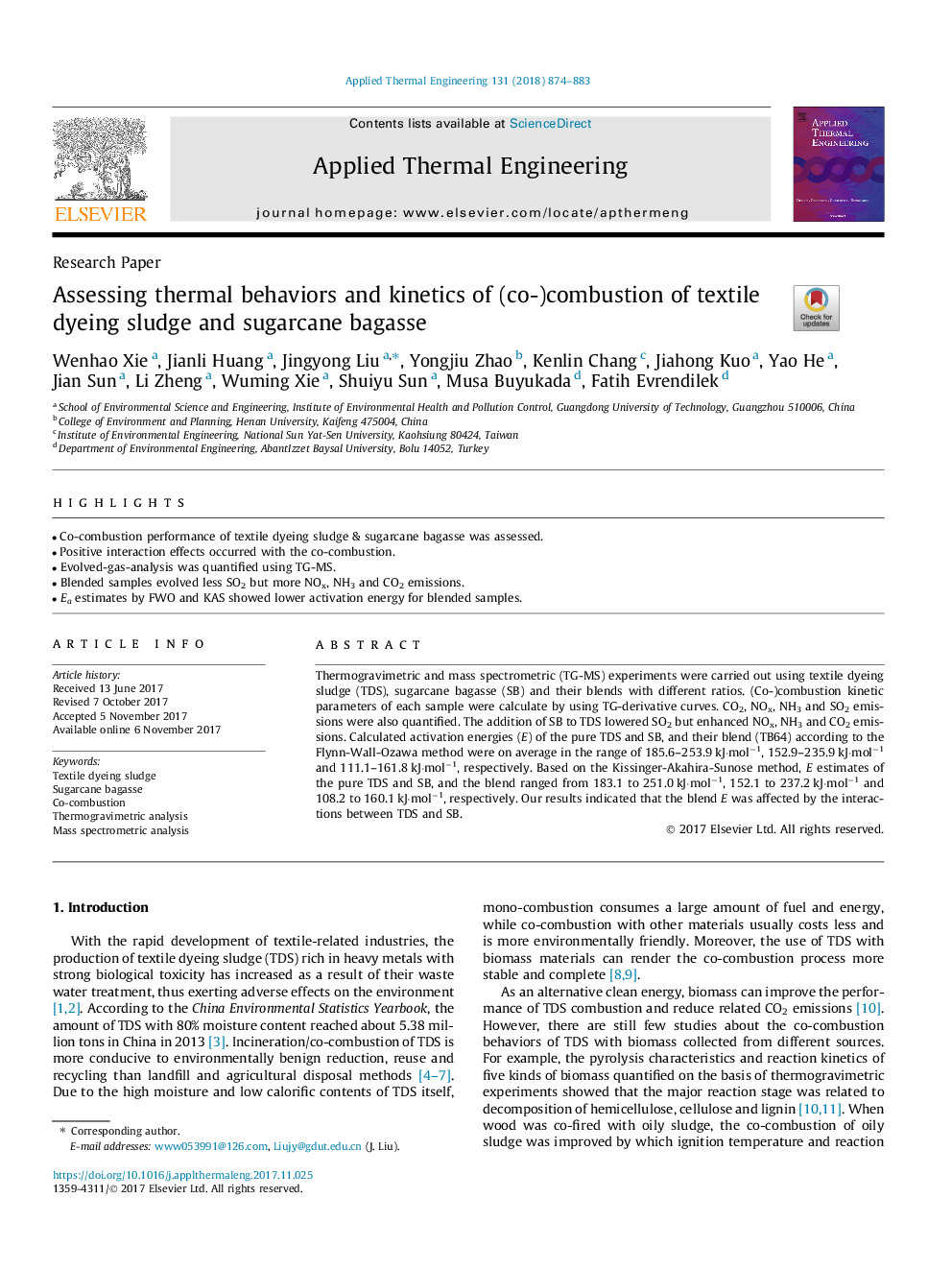| Article ID | Journal | Published Year | Pages | File Type |
|---|---|---|---|---|
| 7046289 | Applied Thermal Engineering | 2018 | 10 Pages |
Abstract
Thermogravimetric and mass spectrometric (TG-MS) experiments were carried out using textile dyeing sludge (TDS), sugarcane bagasse (SB) and their blends with different ratios. (Co-)combustion kinetic parameters of each sample were calculate by using TG-derivative curves. CO2, NOx, NH3 and SO2 emissions were also quantified. The addition of SB to TDS lowered SO2 but enhanced NOx, NH3 and CO2 emissions. Calculated activation energies (E) of the pure TDS and SB, and their blend (TB64) according to the Flynn-Wall-Ozawa method were on average in the range of 185.6-253.9â¯kJ·molâ1, 152.9-235.9â¯kJ·molâ1 and 111.1-161.8â¯kJ·molâ1, respectively. Based on the Kissinger-Akahira-Sunose method, E estimates of the pure TDS and SB, and the blend ranged from 183.1 to 251.0â¯kJ·molâ1, 152.1 to 237.2â¯kJ·molâ1 and 108.2 to 160.1â¯kJ·molâ1, respectively. Our results indicated that the blend E was affected by the interactions between TDS and SB.
Keywords
Related Topics
Physical Sciences and Engineering
Chemical Engineering
Fluid Flow and Transfer Processes
Authors
Wenhao Xie, Jianli Huang, Jingyong Liu, Yongjiu Zhao, Kenlin Chang, Jiahong Kuo, Yao He, Jian Sun, Li Zheng, Wuming Xie, Shuiyu Sun, Musa Buyukada, Fatih Evrendilek,
